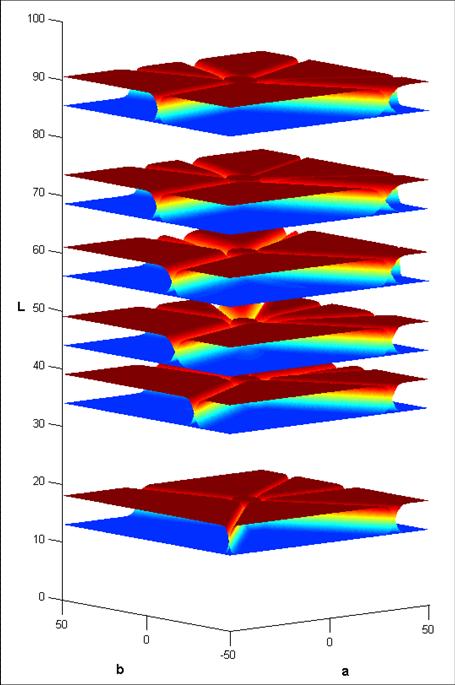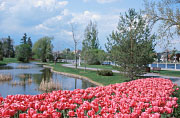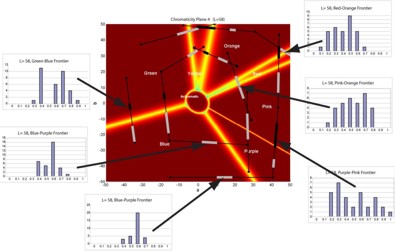|
Colour in Context
Research group Computer Vision Center |
 |
TSE Colour-Naming Procedure
The TSE colour-naming model
A full parametric model has been defined on the CIE Lab space. On this model, each one of the 11 basic colour categories (i.e. White, Black, Red, Green, Yellow, Blue, Brown, Purple, Pink, Orange and Grey) is modelled with a fuzzy set characterized by a combination of sigmoids as membership function. Hence, for any given image pixel, the memberships to the 11 basic categories can be obtained and used by a decision function to assign a linguistic laber to the pixel.
The model has several applications such as segmentation, automatic image description, retrieval, tracking and human-machine interaction.
 |
 |
 |
|
BLUE |
 |
|||
Original image |
Green |
Pink |
White |
Labelled image |
Red |
Orange |
Brown |
In order to refine the proposed model, we have done psychophysical experiments to accurately define the inter-colour regions of the colour-naming space. These experiments are done in our Psychophysics Lab in fully-controlled conditions. The goal is to precisely define the boundaries between basic colours for a mean English speaker.
Matlab code for colour naming
An version of the color naming software for matlab can be found here. The code consist out of two functions:
'SampleColorNaming' applies the TSE model to a single sRGB value. It returns the membership values to the 11 basic color categories and the color term corresponding to the highest membership value.
'ImColorNaming' applies the TSE model to a sRGB image. It returns a matrix with the membership values to the 11 basic color categories for every pixel in the image, and an image with each pixel labelled with the representative color corresponding to the category with the highest membership value at the pixel.
References
. Parametric fuzzy sets for automatic color naming. Journal of the Optical Society of America A, 31(1): 48-56, 2008.
. Psychophysical measurements to model inter-colour regions of colour-naming space. Journal of Imaging Science and Technology, 53(3):031106-(8), 2009.
